Games involving hiding are a core memory for most people’s childhoods, and this fact holds true across all recorded human history. Why? We think it’s a function of having to learn early on in our lives how to effectively avoid predators who may be actively hunting us. Likewise, we must also learn how to effectively hunt prey (or other predators) who are determined not to be found. Both halves of hide and seek can be directly tied back to evolutionary adaptations required to survive in a hostile world. Unfortunately, while the world has grown more developed, it hasn’t become any less hostile. Yet there are very few outlets in adult life that require us to rehearse or hone those hiding and seeking skillsets. One of those outlets is the Special Forces Sniper Course, or SFSC (pronounced siff-SICK). While most of us will never have access to this training, the active-duty Green Beret who runs BRVO Tactical does. He has chosen to pass some of these skills onto the prepared citizen in his unique training class, “The Objective.”
While most military and law enforcement snipers choose to enter the public training community with a precision rifle course, BRVO Tactical’s The Objective takes the complete opposite approach. There’s no shooting whatsoever in this course. Rifles aren’t even on the packing list. This class focuses instead on some of the “soft skills” taught to sniper students — directed observation, camouflage, concealment, and covert movement. We had the opportunity to attend the flagship iteration of this course, which gave us some very hands-on experience that was a little more developed than hiding in a bedroom closet from our siblings.
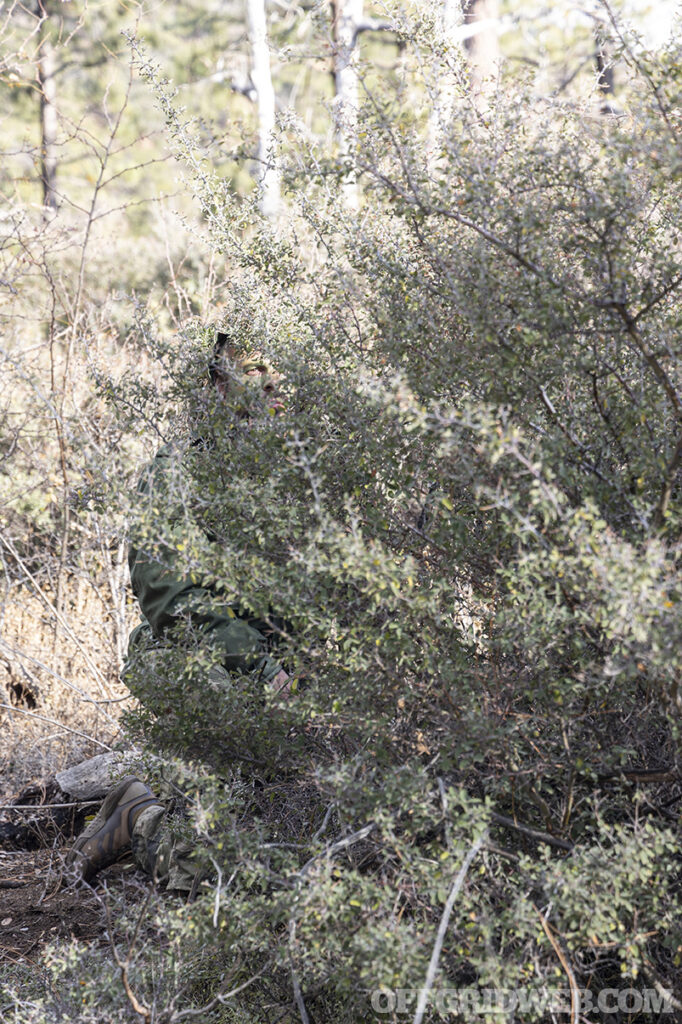
Above: Observed from the side, as seen in the first image of this article, the author is clearly visible. But from the perspective of his target, he disappears into the surrounding foliage.
Don’t Look. See.
The first exercise of the course was an observation lane. Instructor cadre hid several objects out in our wooded training area, mirroring potential discarded or cached equipment left by adversaries. Ammo pouches, hand tools, food wrappers, and ordnance were all placed throughout the terrain at distances between 10 and 30 yards. This may sound like it’s close enough to spot with ease, but it still proved quite difficult. Students were lined up shoulder-to-shoulder and given a fixed period of time to find as many of the objects as possible. Each student was required to keep a written map that showed what objects they believed they could see in what locations. This was, ironically, perhaps the most difficult exercise of the entire course for us, scoring a meager 3 out of 10 items. But we learned a lot of valuable information about what’s known as the 7 S's of camouflage:
- Silhouette
- Shine
- Shadow
- Shape
- Shade
- Sound
- Speed
These are the characteristics outlining how objects fit (or don’t fit) into their surroundings. When you don’t know specifically what objects you’re supposed to see, or where you’re supposed to see them, you must start looking for visual anomalies — irregular shadows, excessive shine, odd shapes, unnatural shades. These are all examples of signs to look for that might indicate something is out of place, even if you don’t know what that is.
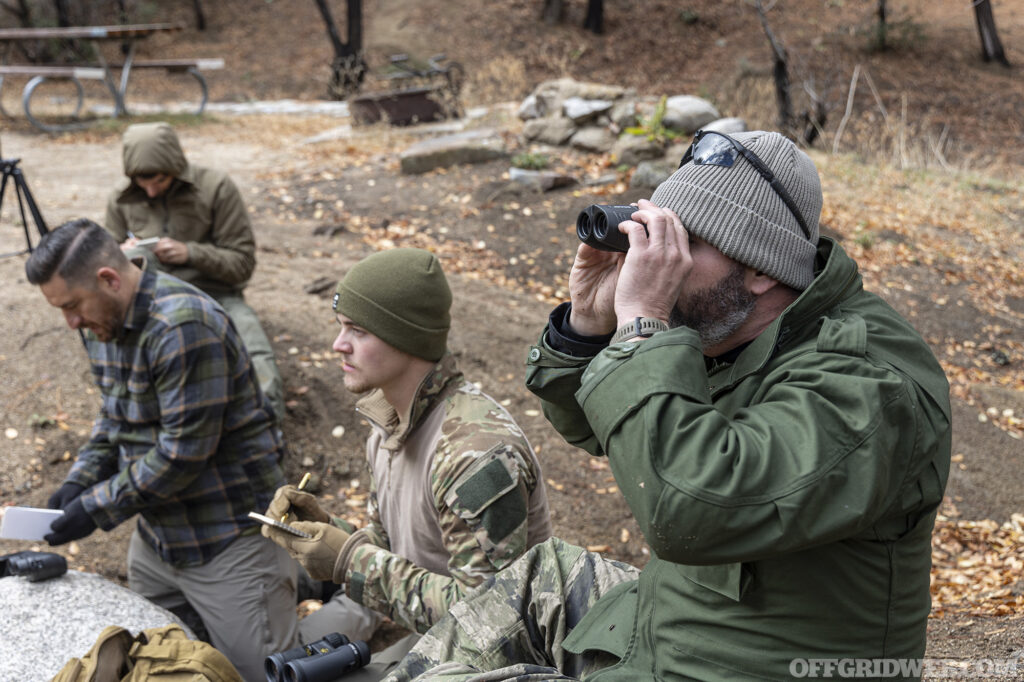
Above: In the observation lane exercise, students searched an area for hidden items, taking notes, drawing diagrams, and reporting what they found to the instructor.
Behind the Veil
Understanding these concepts and seeing first-hand how difficult they can be to pick up on led the class directly into our next exercise: ghillie suit construction.
While we did not build full suits like you might see in the movies, each student was provided a “cobra hood,” which includes a hood and sleeves to cover the wearer’s upper half. It should be noted here that, while The Objective isn’t an inexpensive course, the tuition includes several hot meals as well as an impressive amount of gear. Every student received a cobra hood, burlap fiber kit, camouflage mesh, pruning shears, binoculars, laser range finder, spotting scope, tripod, and backpack, which we got to keep at the end of the class.
These were not top-tier, name-brand items, but they were up to the task for the two-day course and are meant to be knocked around and used in any kind of follow-on training or rehearsal you might do at home. We like this strategy because, even if you do have multi-thousand-dollar optical equipment, you don’t have to worry about damaging or losing it during this course.
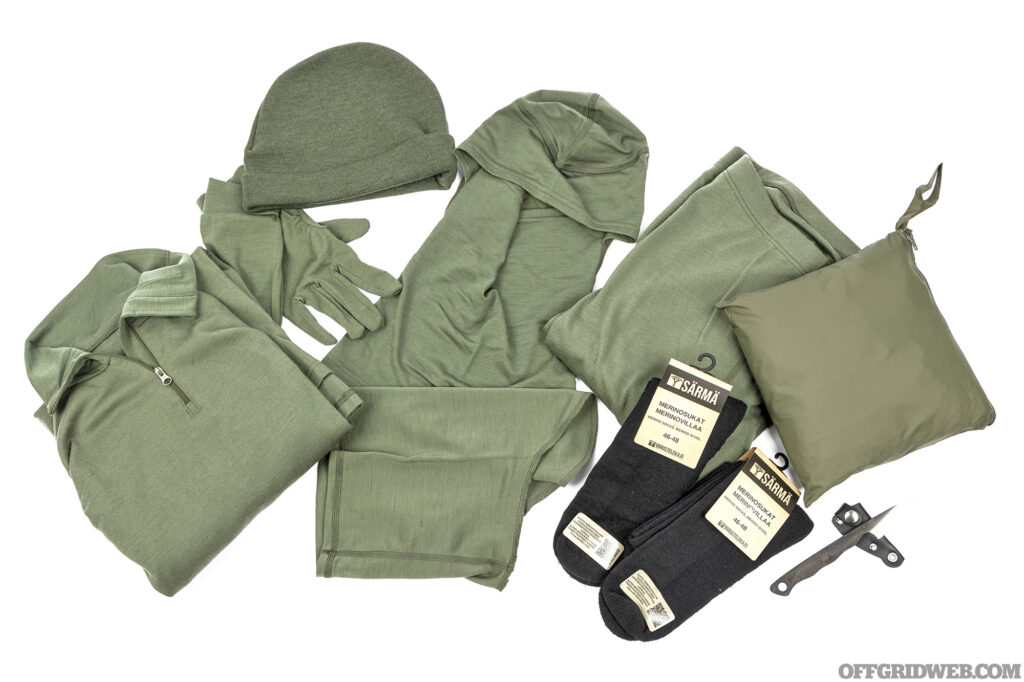
Above: Finnish gear manufacturer Varusteleka provided these warm and comfortable Merino wool garments for Editor Patrick McCarthy to use during the course, along with a packable rain poncho and small neck knife.
Students learned how to use both burlap strips and natural vegetation to build out their ghillie hoods to match the terrain. We also learned how to use these same materials to cover spotting scopes, tripods, and rifles. RECOIL OFFGRID Editor Patrick McCarthy made excellent use of the provided Cobra hood along with MultiCam outerwear from Beyond Clothing and Merino wool mid-layer apparel from Varusteleka.
Weather during the class hovered around freezing with occasional snow flurries, and we were often laying perfectly still or crawling across the cold ground. So, donning multiple layers over moisture-wicking Varusteleka wool long johns helped him stay dry and comfortable while he was concealed. Similarly, the Finnish company’s wool socks, glove liners, and wool balaclava kept every bit of exposed skin concealed and fully protected from the chilly air.
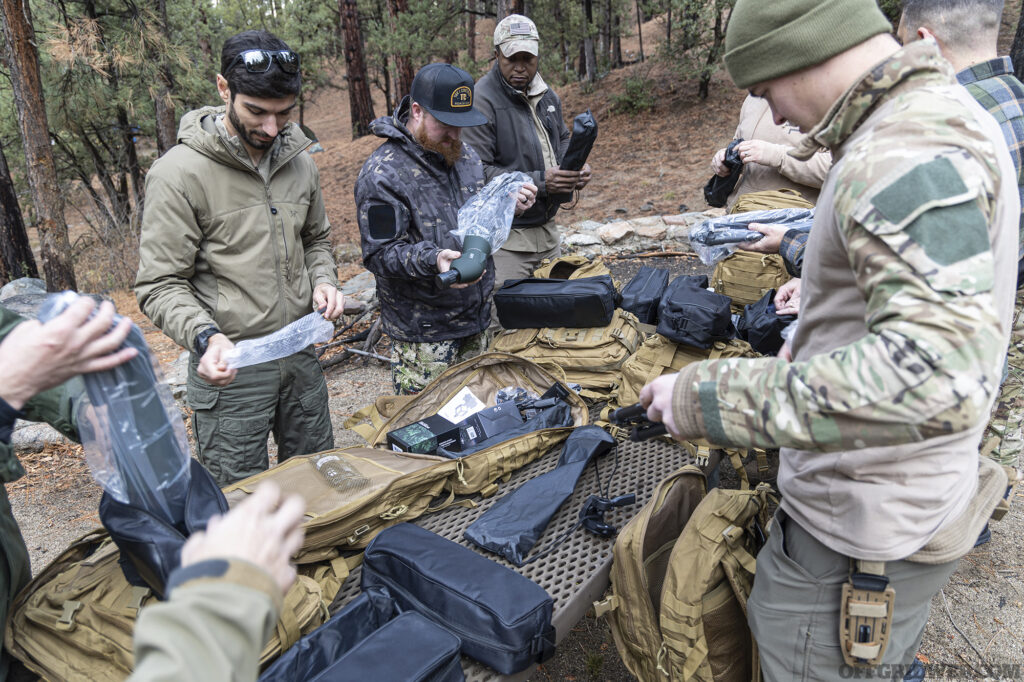
Above: Each student received a backpack loaded with basic gear for use during the course, including camouflage materials, binoculars, and a spotting scope.
The author decided to test out a piece of gear we’d been sitting on for just such an occasion — a Propper M65 Field Jacket specially modified by a one-man tactical sew shop that goes by the handle @night_fighter_0 on Instagram. The Night Fighter Field Jacket mod package includes several handy upgrades like sewn-in elastic mag pouches, MOLLE webbing channels, and a ghillie net modification sewn into the M65’s roll-out hood. When not in use, or built out with vegetation, the M65’s hood stowed in the zip-close collar.
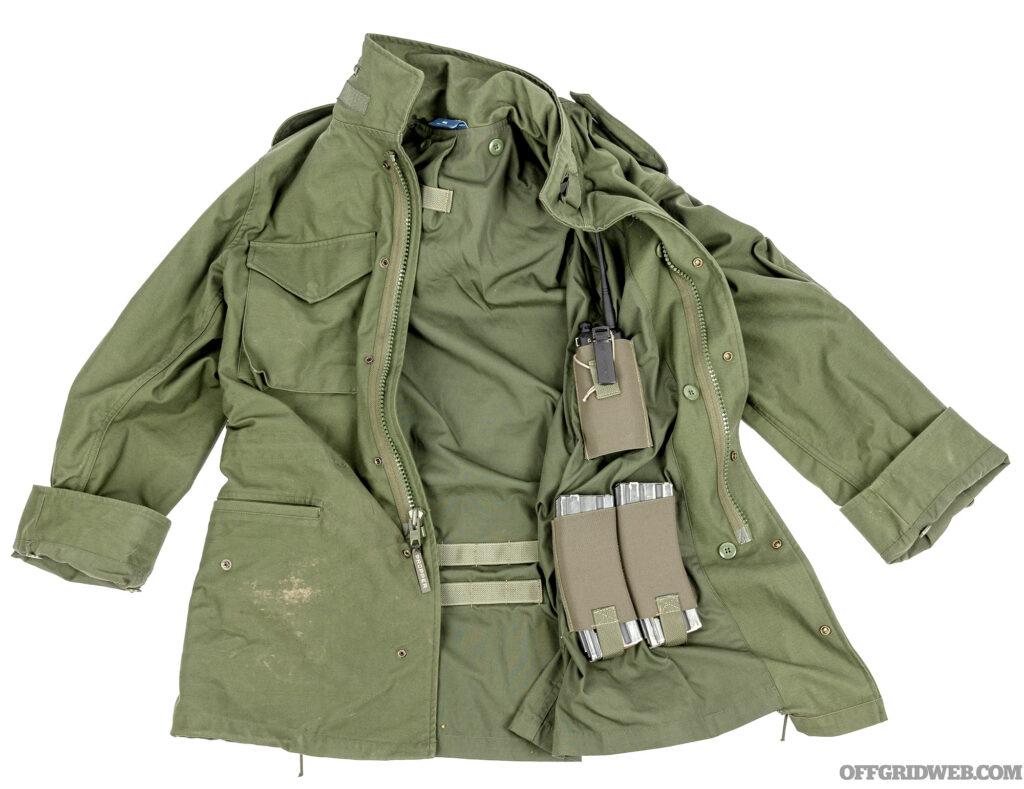
Above: The author wore this Propper M65 field jacket at the course. It was modified by @night_fighter_0 to add concealable pouches for rifle magazines and other tools, as well as a stowable ghillie hood.
If needed, simply unzip the collar, unfurl the hood, and attach natural vegetation as needed for maximum concealment. While the M65’s olive drab won’t work in all environments, it worked great in our training terrain — a mountainside at approximately 5,000 feet in wintertime, with plenty of greenery left on the land.
We were actually surprised at just how effective a giant single-color jacket was in this class, considering that all the other students were wearing full camouflage outfits. Likewise, the M65’s hood doesn’t offer the shoulder and arm coverage of a dedicated ghillie hood or half-suit, but as a rapid-deployment solution that can be stowed away and still let you fit into a suburban environment, the Night Fighter mod worked great.
Once the students built-out their ghillies and applied camouflage grease paint to their faces and hands, we were given the chance to test our concealment skills in a couple of back-to-back exercises with the instructors trying to spot students who had settled into their hide sites.
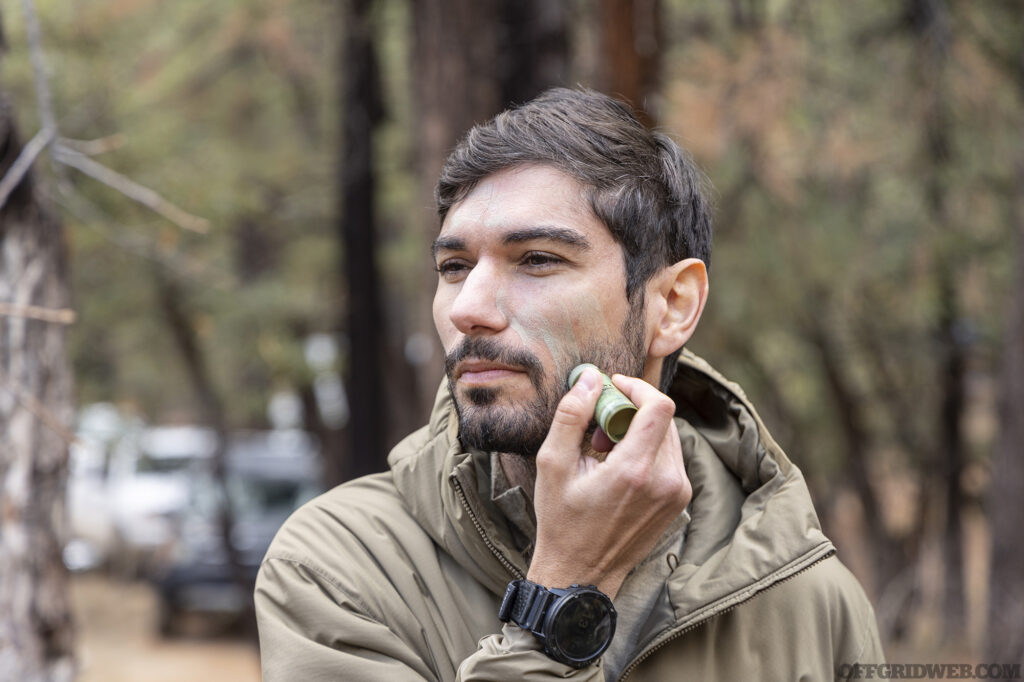
Above: Grease paint is an essential tool for concealing areas of exposed skin. We blended light and dark colors to match the colors of the surrounding forest.
On Objective
The final training exercise was modeled after a standard U.S. Military graded stalk. Students were assembled at a rally point that was an unknown distance from the target area. A visual description of the target (in this case, BRVO Tactical’s founder standing in a trailer hitched to his pickup truck) and GPS coordinates to that position. The trailer had several HAZMAT placards with symbols, colors, and numbers attached to it. Students had to get close enough to read each sign clearly, recording what they saw in their field notes.
As an added level of difficulty, there were multiple placards attached to all four sides of the vehicle, which meant students would have to maneuver in and out of multiple positions to record all the placards. Students had three hours to traverse the terrain and move into multiple concealed positions to annotate the letter/number/color combinations on each side of the truck without getting spotted by the instructor who was continuously observing with magnified optics.
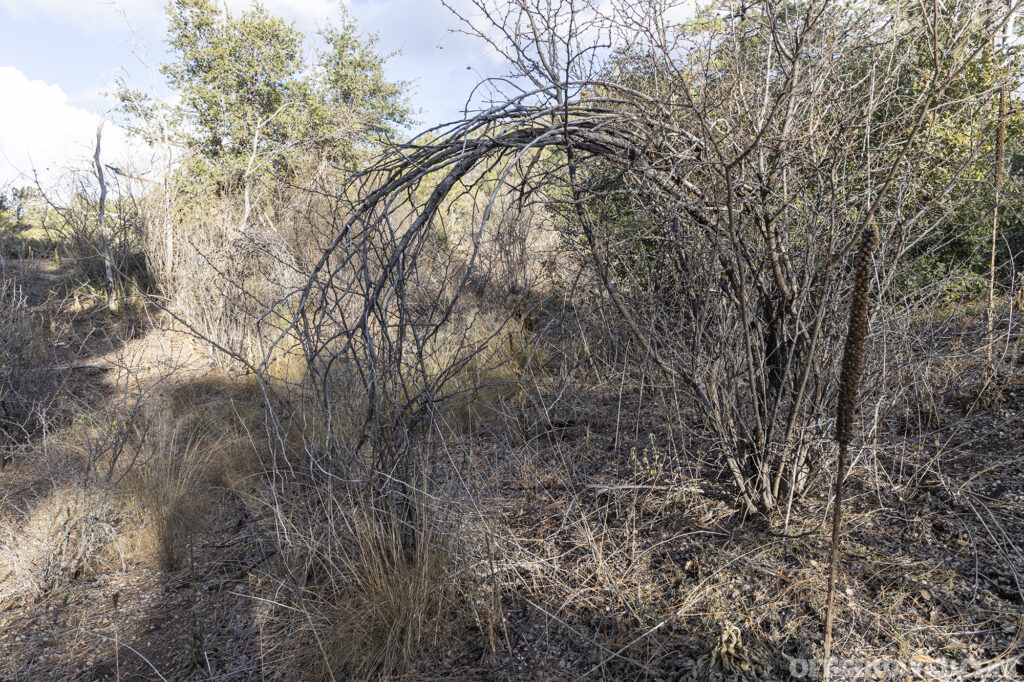
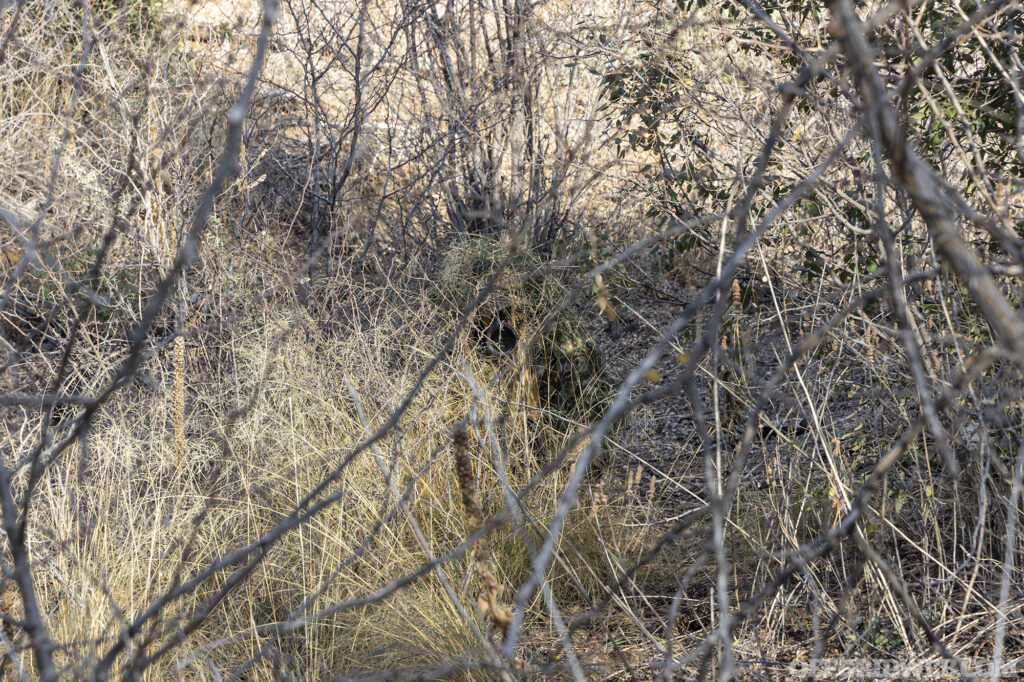
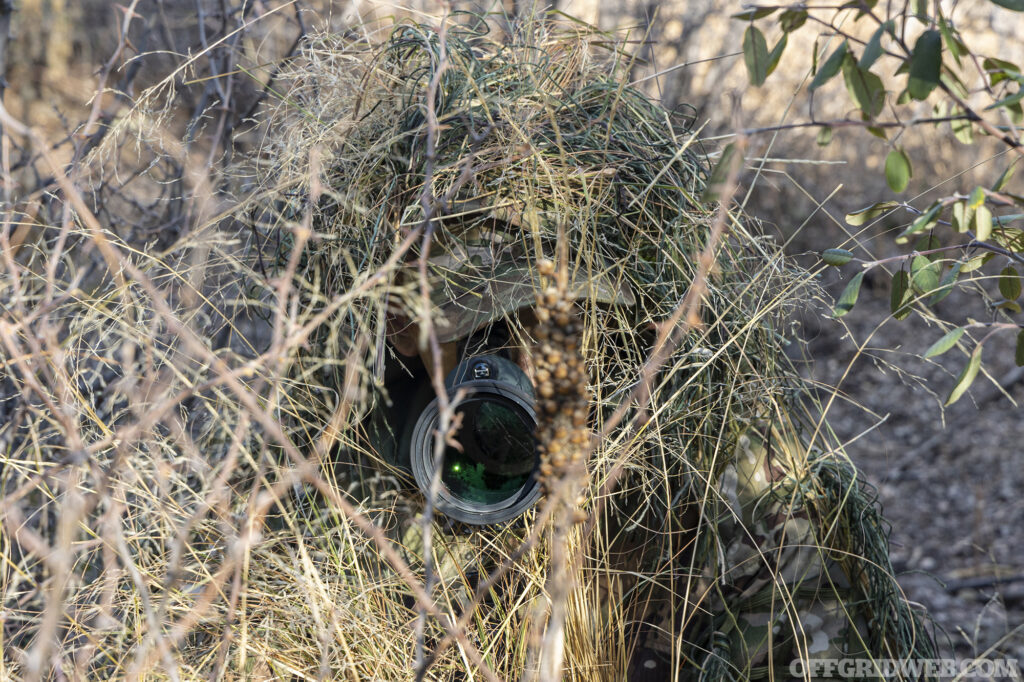
Above: As the camera moves closer, the lens of a spotting scope slowly becomes visible among the brush. Even from 10 yards away, you’d have a hard time noticing it.
Students weren’t told how to complete the mission and were allowed to use any of the optical equipment issued to them at the start of the class. The high-power spotting scope would allow a student to stay further away from the cadre but would have to be loaded into a pack or dragged behind by its tripod for the duration of the exercise, increasing the likelihood of getting caught.
Binoculars could be placed into a pants pocket, allowing a student to pack lighter and move quieter, but their lower magnification would require getting much closer to the target vehicle. Balancing the limitations of equipment against the ability to move covertly, applying camouflage correctly, and utilizing the terrain to your advantage, was a highly individual thought exercise that produced unique lessons for each student.
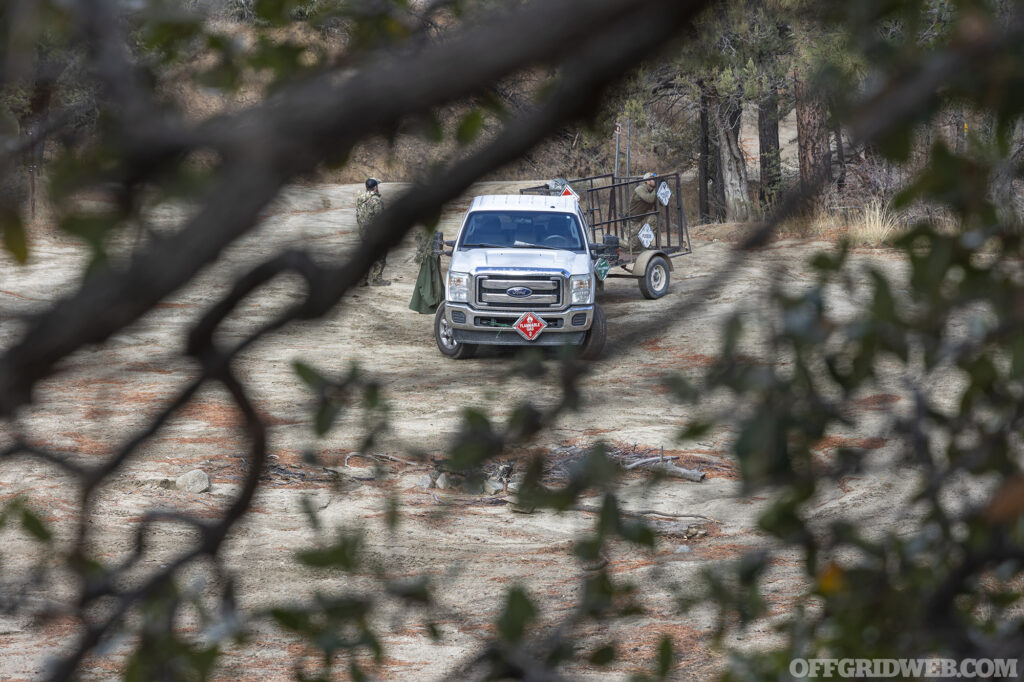
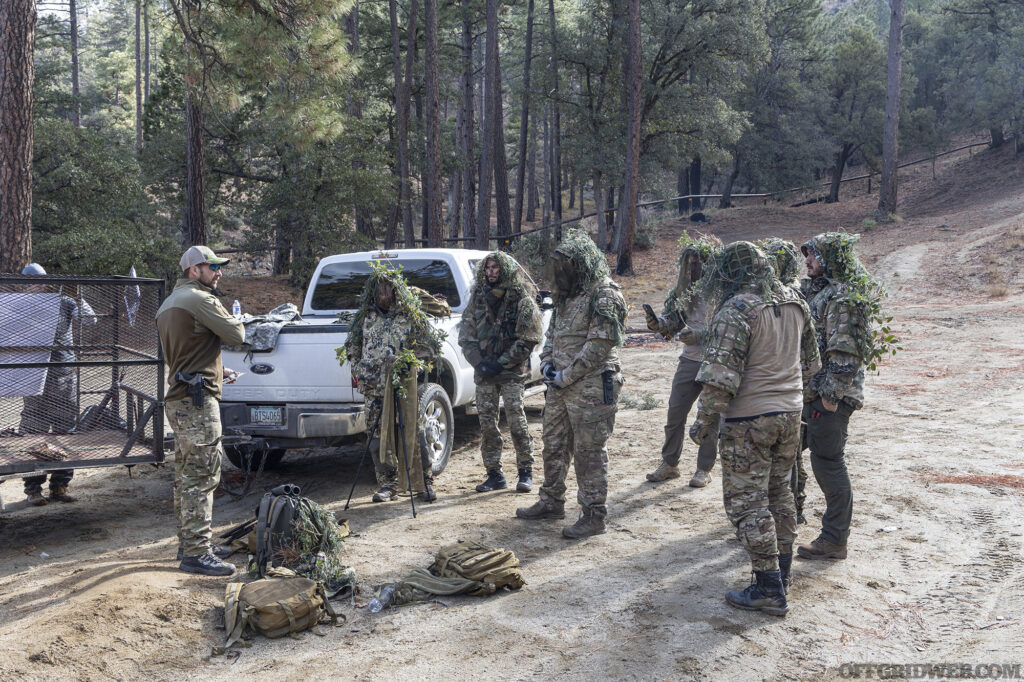
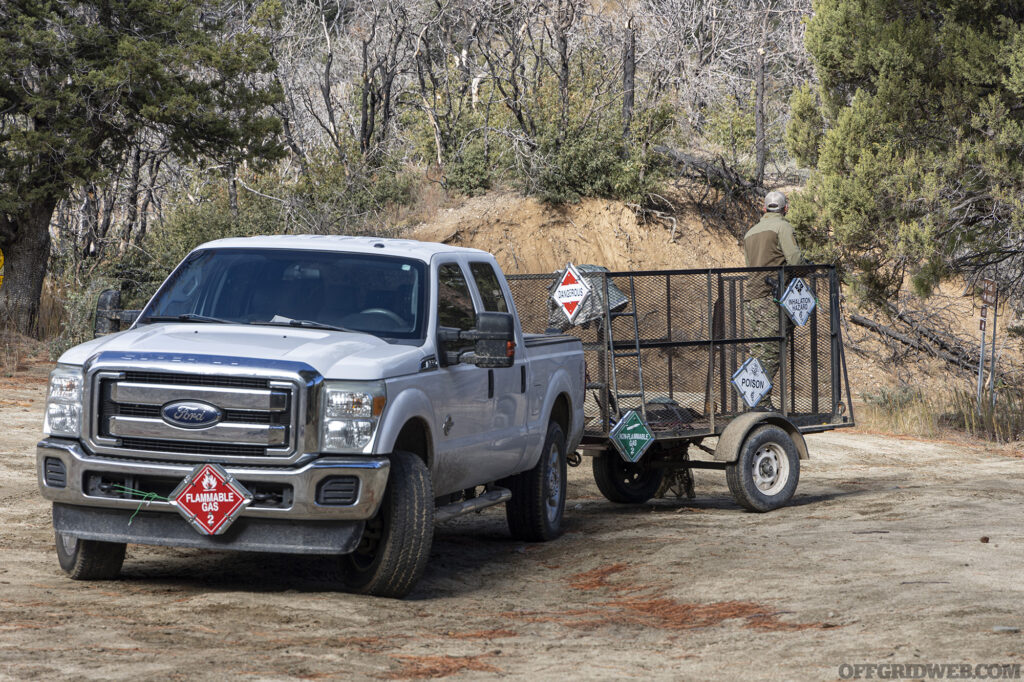
Above: For the final exercise, students had to get close enough to this truck and trailer to read the HAZMAT signs while being careful not to get spotted by the BRVO Tactical instructor.
Lessons Learned
When framed in the context of “learning sniper skills,” it’s a logical pitfall to dismiss this course as tactical tourism or enter-train-ment. But, as we pointed out in the beginning, learning how to move undetected and identify hide sites is a fundamental survival mechanism that remains programmed into our earliest playground socializations. Even current Homeland Security guidelines tell us to Run-Hide-Fight … in that order. The movement and concealment skills taught during The Objective will make you better at the first two.
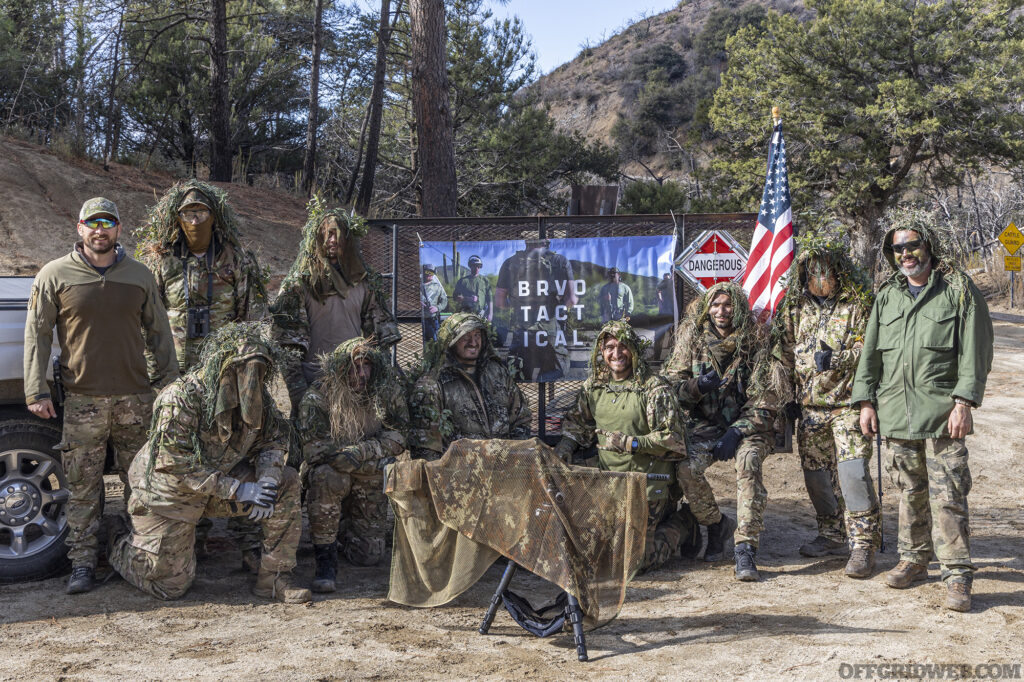
Above: Get out and train! It's a great way to build skills and develop friendships with like-minded individuals in the community.
If you must fight, wouldn’t you rather fight from a position of surprise than a position of reaction? The Objective is a 36-hour immersion course in evolutionary survival skills that have been keenly weaponized by years of battlefield testing. We applaud the cadre at BRVO Tactical for taking their years of military and law enforcement special operations experience and paying it forward to the citizens they’ve sworn to protect.
Sources
Read More
Subscribe to Recoil Offgrid's free newsletter for more content like this.
Editor's Note: This article has been modified from its original print version for the web.
The post The Objective: BRVO Tactical’s Reconnaissance Class appeared first on RECOIL OFFGRID.
By: Patrick Diedrich
Title: The Objective: BRVO Tactical’s Reconnaissance Class
Sourced From: www.offgridweb.com/preparation/the-objective-brvo-tacticals-reconnaissance-class/
Published Date: Sat, 04 May 2024 11:00:24 +0000
------------------------
Did you miss our previous article...
https://bushcrafttips.com/bushcraft-news/so-what-exactly-is-an-emp-all-its-phases-explained
 What is BushcraftSurvival SkillsToolsVideosBushcraft CampsBushcraft KitsBushcraft ProjectsPrivacy PolicyTerms And Conditions
What is BushcraftSurvival SkillsToolsVideosBushcraft CampsBushcraft KitsBushcraft ProjectsPrivacy PolicyTerms And Conditions
